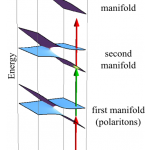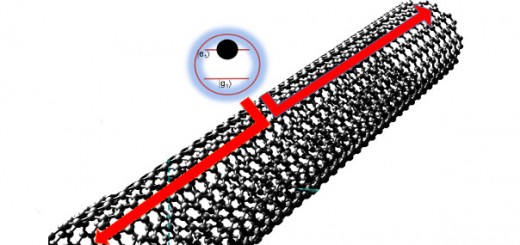 The conversion of laser light into quantum light is one of the requisite of tomorrow’s quantum technology. A popular trick to do so is the so-called polariton blockade, where the incoming classical light is broken down into a stream of isolated photons (“antibunched” light) thanks to the non-harmonic spacing of the energy levels of a strongly-coupled light-matter interface.
The conversion of laser light into quantum light is one of the requisite of tomorrow’s quantum technology. A popular trick to do so is the so-called polariton blockade, where the incoming classical light is broken down into a stream of isolated photons (“antibunched” light) thanks to the non-harmonic spacing of the energy levels of a strongly-coupled light-matter interface.
In 2012,
Fabrice Laussy and
Elena del Valle have identified with co-authors several factors to optimize quantum effects in strongly dissipative systems
[1]. This is relevant in particular for semiconductors, which remain the platforms of choice for massive deployment. One of these factors is detuning, namely, rather than bringing light and matter in resonance as is usually sought to optimize strong-coupling, it is better instead to have them interact at a distance (in energy), allowing the classical laser to find room in between to excite various quantum resonances. The wider picture of polariton blockade in a detuned and dissipative environment is shown on the Figure.
Kai Müller, Armand Rundquist, Kevin Fischer and collaborators, from the group of Jelena Vučković in Stanford, have applied this requisite to generate record values of antibunching in the solid state, thanks to the detuned photon blockade configuration
[2]. The Authors then proceed to further characterize the quantum state, in particular its higher purity. This result is not only a great on-chip achievement for technological applications, it is also a first and big step towards the control of deeper quantum effects in the solid state thanks to detuning, at the culmination of which lies the
N-photon emitter [3], theorized by researchers of the Universidad Autònoma de Madrid.
 The conversion of laser light into quantum light is one of the requisite of tomorrow’s quantum technology. A popular trick to do so is the so-called polariton blockade, where the incoming classical light is broken down into a stream of isolated photons (“antibunched” light) thanks to the non-harmonic spacing of the energy levels of a strongly-coupled light-matter interface.
The conversion of laser light into quantum light is one of the requisite of tomorrow’s quantum technology. A popular trick to do so is the so-called polariton blockade, where the incoming classical light is broken down into a stream of isolated photons (“antibunched” light) thanks to the non-harmonic spacing of the energy levels of a strongly-coupled light-matter interface.

















